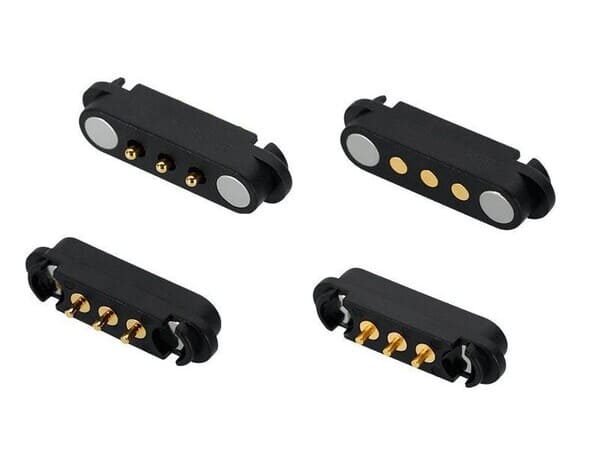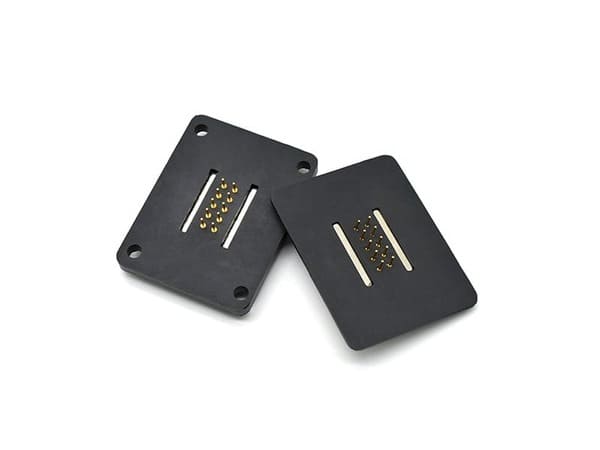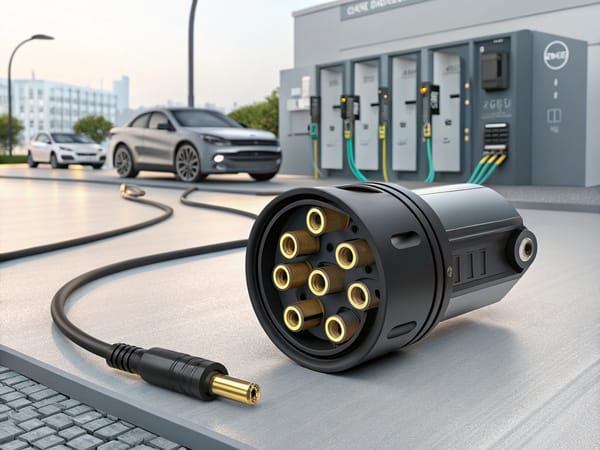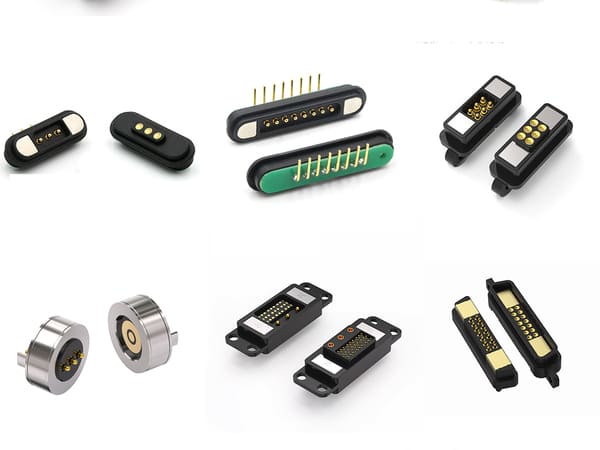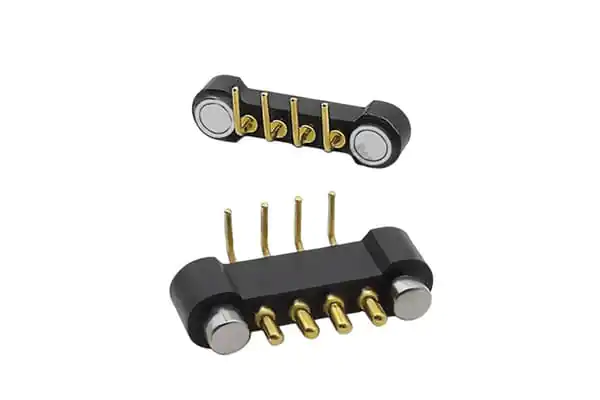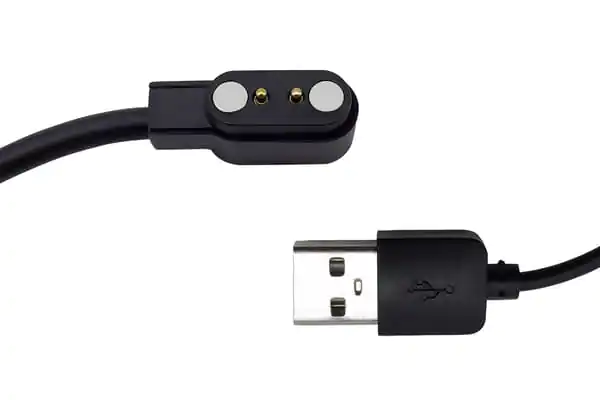Have you ever struggled with loose charging ports or connectors that just don’t last?
Magnetic pogo pin connectors offer a clever way to tackle these everyday annoyances.
Developed through thoughtful engineering, they provide quick, durable connections that work well across a variety of devices, from personal gadgets to industrial tools.
Magnetic pogo pins are spring-loaded connectors that rely on magnets for precise alignment and solid electrical contact.
For anyone searching for dependable solutions, these components deliver consistent performance, making them a great fit for many applications.
But what makes them tick, and why are they often a better choice than traditional connectors?
Let’s dive into their design, benefits, and tips for choosing the right one for your needs.
How Do Magnetic Pogo Pins Work?
These connectors blend the simplicity of spring-loaded contacts with the accuracy of built-in magnets.
Magnetic pogo pins work by combining spring-loaded contacts with built-in magnets for precise functionality.
The magnets ensure accurate alignment of devices, while the compressed springs maintain consistent electrical transfer, even during movement or vibration.
This design supports stable and efficient connections, making them highly effective for various electronic applications and testing scenarios.
Key Structural Components
Most magnetic pogo pins are made up of these core parts:
| Component | Function | Material Example |
|---|---|---|
| Spring | Maintains contact pressure | Stainless steel |
| Plunger (Pin) | Conducts electricity | Gold-plated copper |
| Barrel | Houses spring and plunger | Brass or nickel alloy |
| Magnet | Aligns and secures connection | Neodymium (rare earth) |
The gold plating on plungers keeps resistance low (sometimes as little as 10mΩ) and prevents wear from oxidation.
In demanding scenarios like automotive charging setups, reinforced springs and thicker plungers are often used to handle higher currents, up to 15A.
Why Choose Magnetic Over Traditional Connectors?
Magnetic pogo pin connectors tend to stand out compared to older designs due to their practical advantages.
Magnetic pogo pins offer practical benefits over traditional connectors.
They minimize wear by reducing physical scraping during connections, with reductions sometimes reaching up to 70%. Their sealed design also blocks dust and moisture, enhancing durability in challenging conditions.
This makes them a reliable choice for applications requiring consistent performance and longevity in electronics.
Performance Comparison Table
| Factor | Magnetic Pogo Pins | Traditional Connectors |
|---|---|---|
| Mating Cycles | 100,000+ | 5,000-10,000 |
| Water/Dust Resistance | IP67-IP68 | Limited (IP40 typical) |
| Current Capacity | Up to 15A | 3A-5A (USB-C) |
| Maintenance Needs | None | Frequent cleaning |
In areas like automotive electronics, this durability is crucial.
A faulty connector could disrupt essential systems like charging units or sensors, so opting for reliable designs is a must.
Where Are Magnetic Pogo Pins Used?
Where Are Magnetic Pogo Pins Used?
As we dive into the realm of cutting-edge connectivity solutions, magnetic pogo pins stand out for their innovative approach.
Their clever design and practical features open up a wide array of uses across different industries.
Magnetic pogo pins are incredibly versatile and reliable, finding use in numerous fields.
They are integral to consumer electronics such as smartwatches, wearable chargers, and smartphones.
Beyond that, they are essential in specialized equipment like medical tools and military drones.
Their role extends to industrial applications, electric vehicle battery systems, and aerospace technology, ensuring robust and efficient connections.
Industry-Specific Requirements
-
- Need compatibility with sterilization processes
- Often restricted to 10μA leakage current for safety
- Example: Portable ultrasound probes
-
Electric Vehicles
- Must support 15A+ current ratings
- Require vibration resistance (up to 20G)
- Example: Battery management systems
-
Industrial IoT
- Function in extreme temperatures (-40°C to 125°C)
- Include EMI shielding for dependability
- Example: Programmable logic controller (PLC) connections
Materials are often customized for these uses.
Medical applications might use specific grades of stainless steel, while EV connectors could feature high-temperature insulators for extra resilience .
How to Select the Right Magnetic Pogo Pin?
Choosing the wrong magnetic pogo pin connector can waste time and effort.
To make the right pick, keep a few practical considerations in mind, based on insights from the field.
To select the right magnetic pogo pin, assess size and pin count for compatibility with your device.
Ensure current capacity matches electrical needs and check durability for over 100,000 mating cycles.
Evaluate environmental factors like moisture or temperature to guarantee performance in specific conditions.
Selection Checklist
- Signal pins: 0.5A-2A
- Power pins: 5A-15A [2]
- IP rating (IP67 for outdoor use)
- Temperature range suitability [4]
✅ Compliance
- RoHS/REACH for markets like the EU
- CE/FCC standards for electronics [4]
- Magnet strength options (e.g., N52 vs. N35)
- Plunger design variations (flat or domed) [2]
For highly specialized needs, such as military projects, ensure access to detailed documentation and inspection reports to meet rigorous standards.
Conclusion
Magnetic pogo pins provide durable, high-performance connections for a wide array of industries.
With careful selection and customization, they consistently outshine traditional connectors in reliability and longevity.
At CTP, we’re dedicated to offering solutions tailored to various challenges.
For more details, check out our homepage or get in touch via our contact page.

